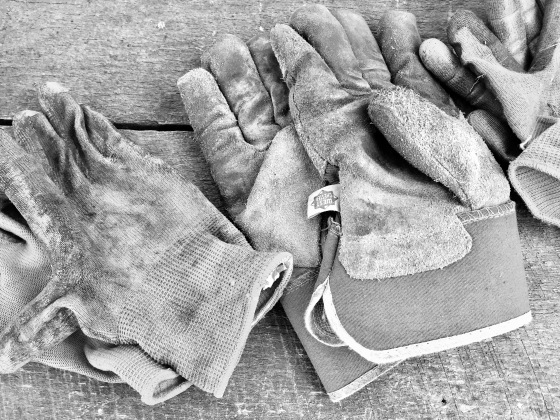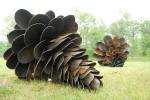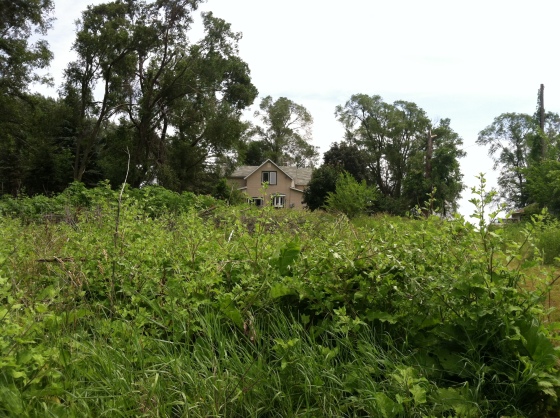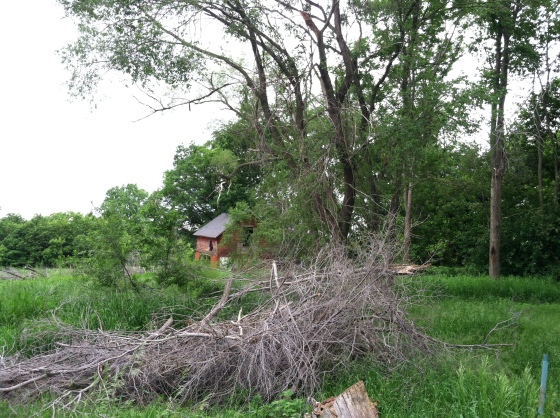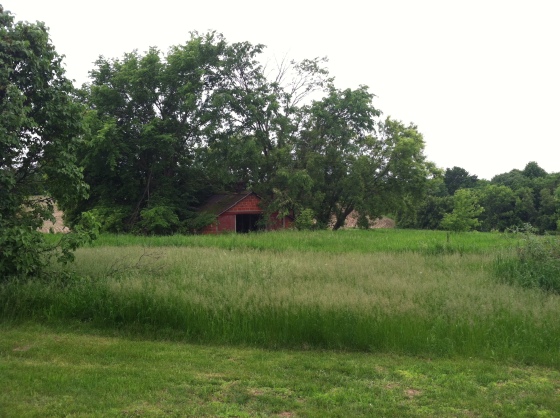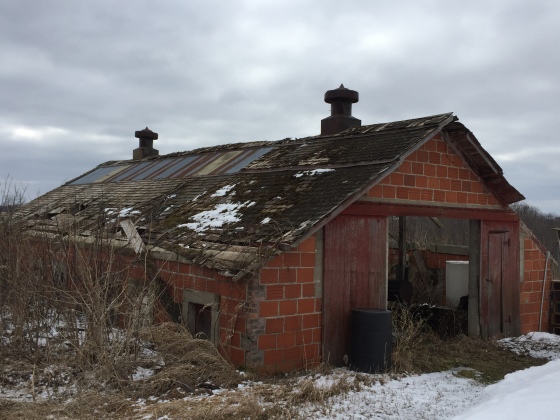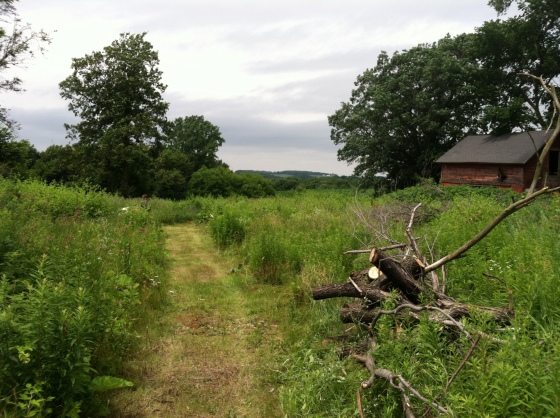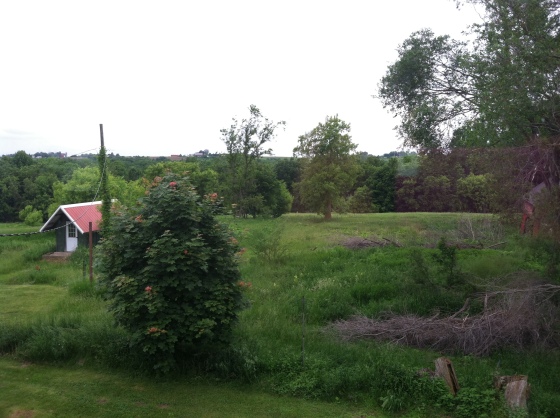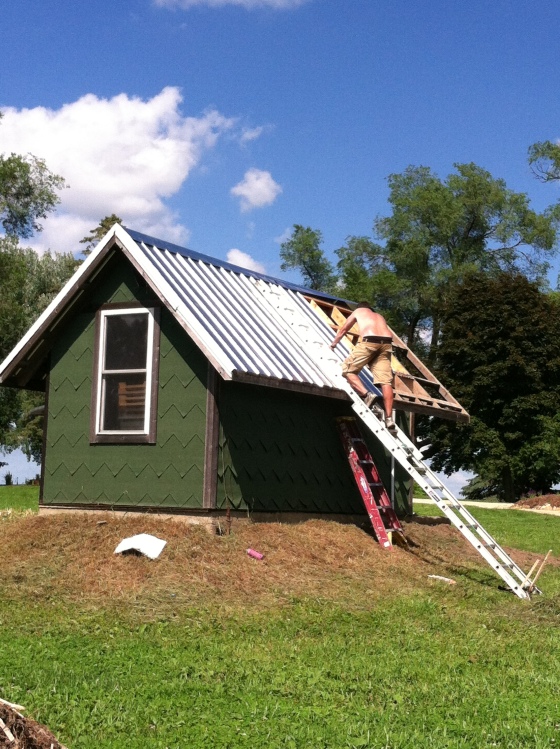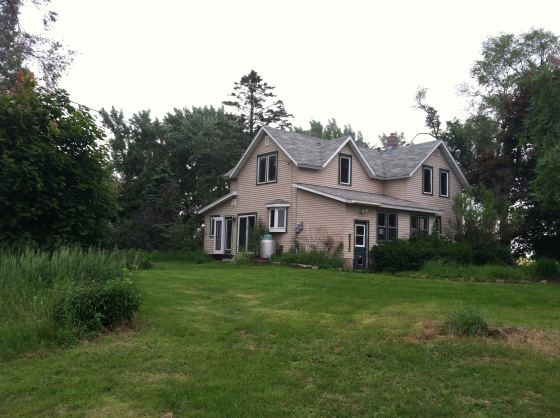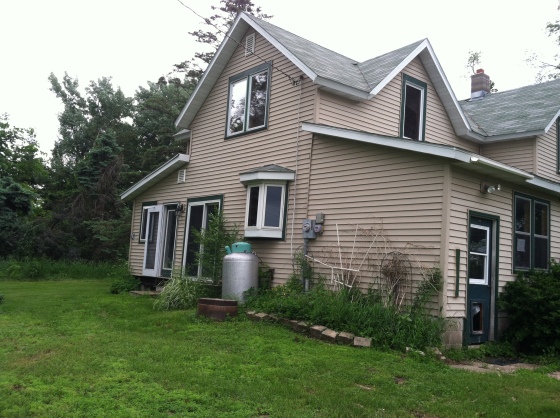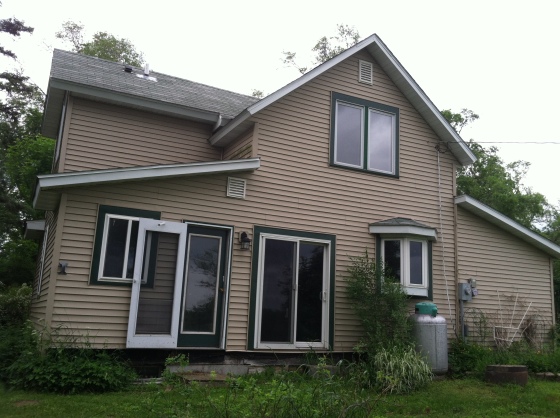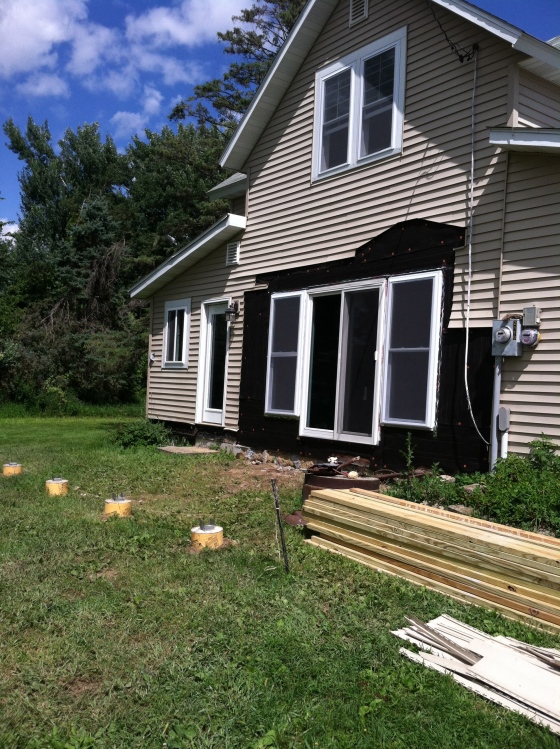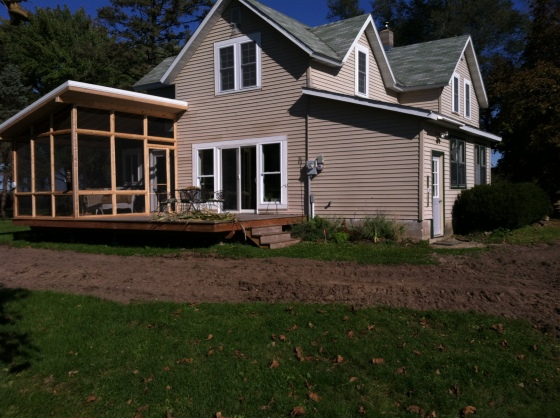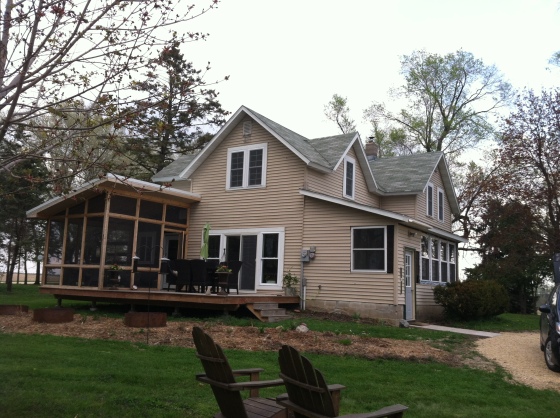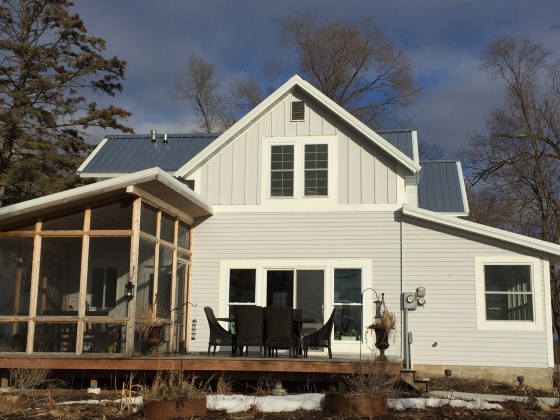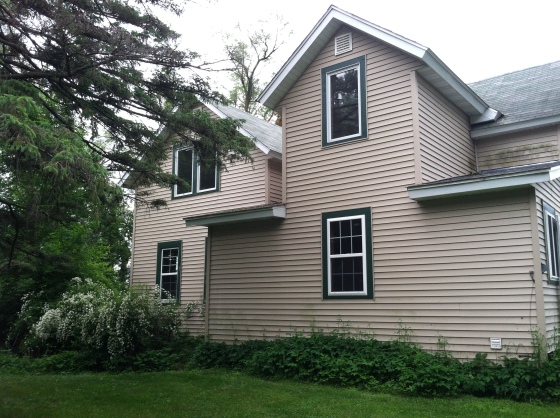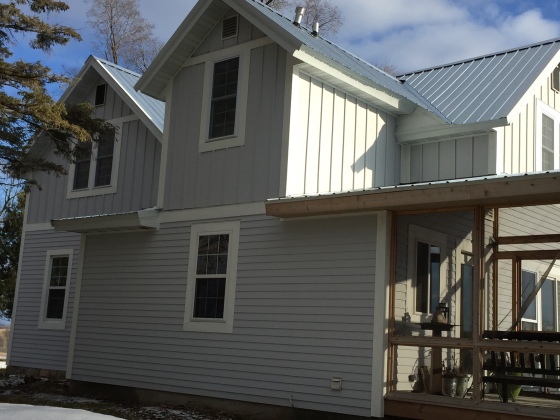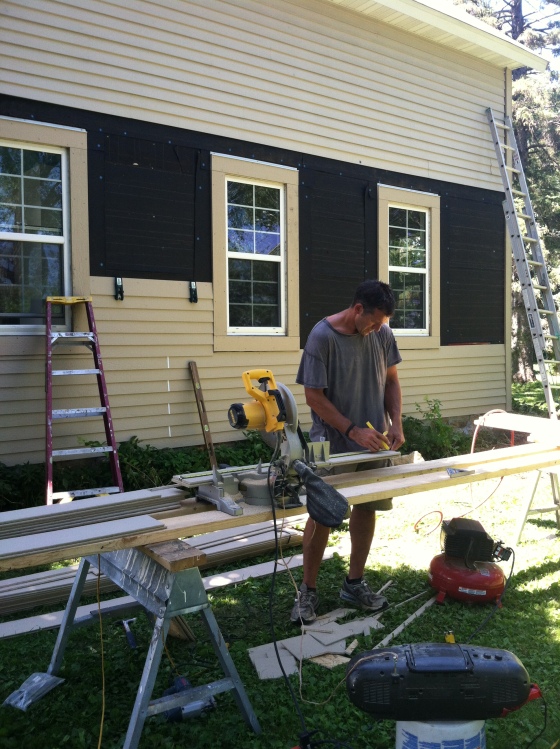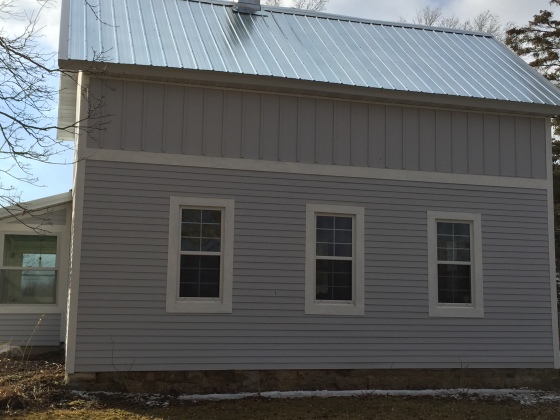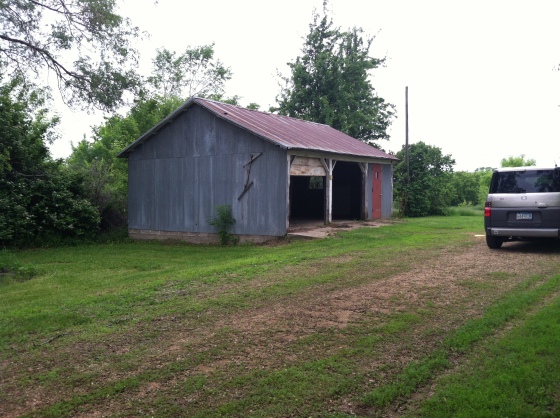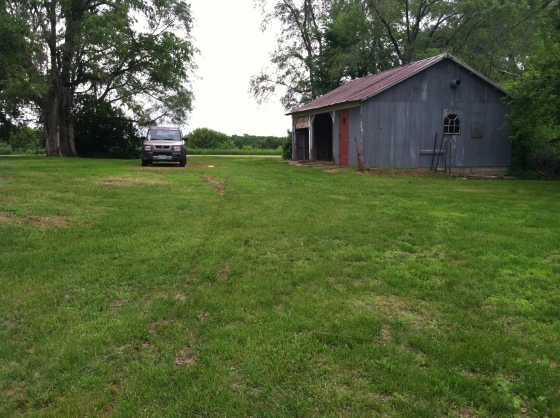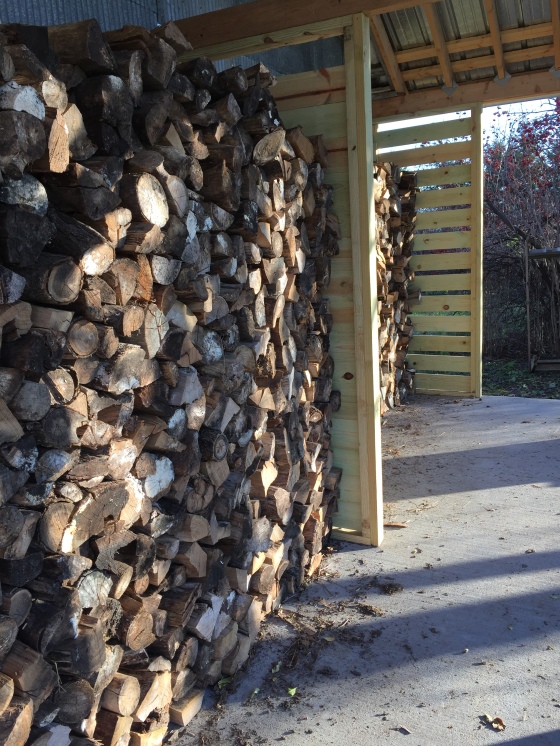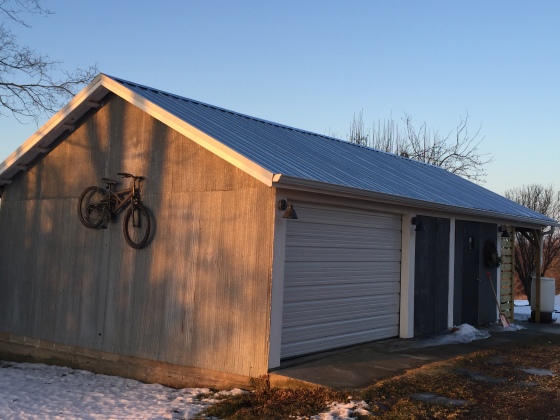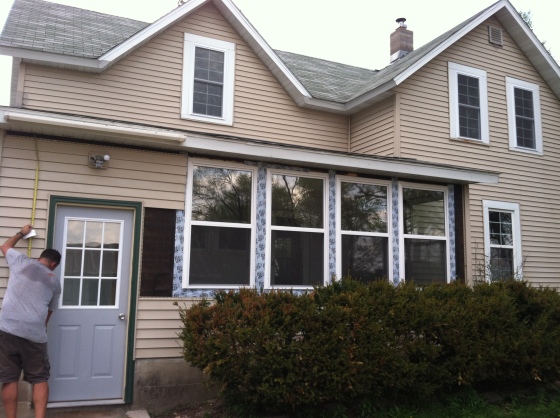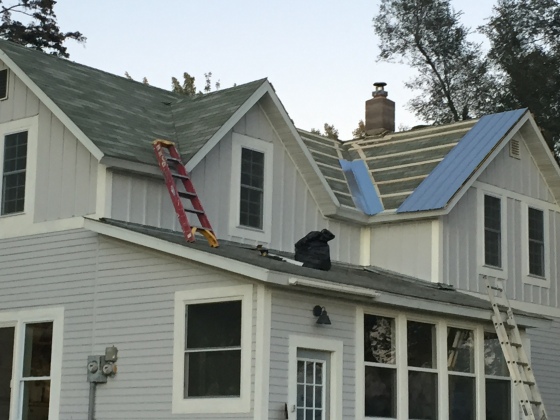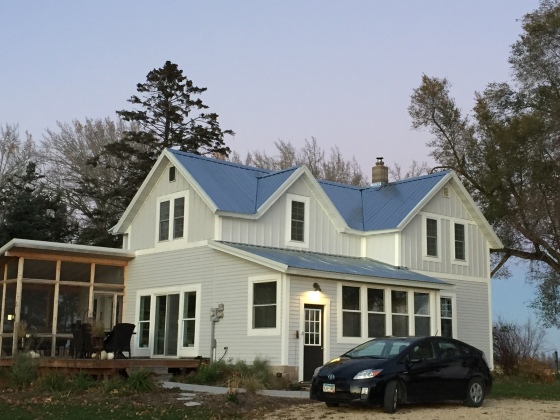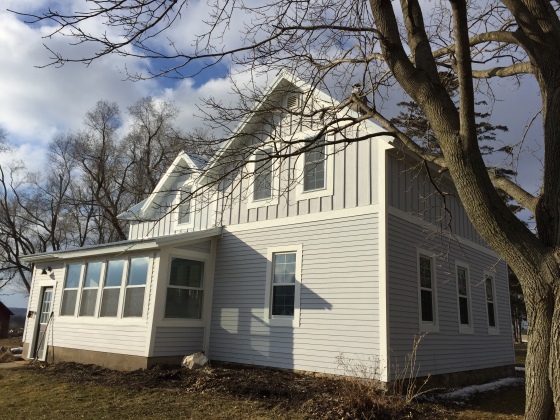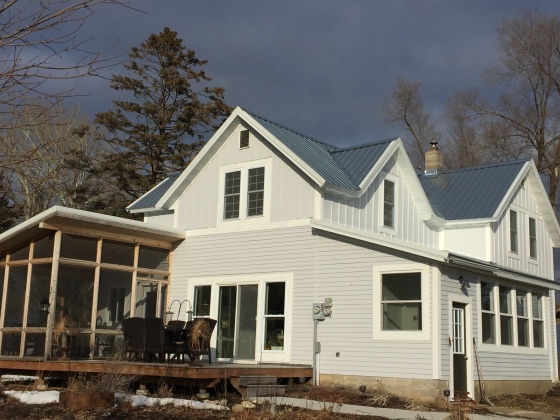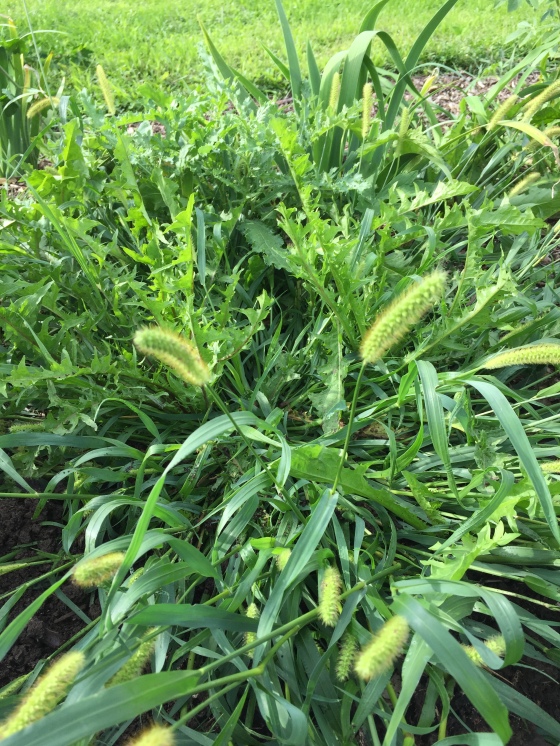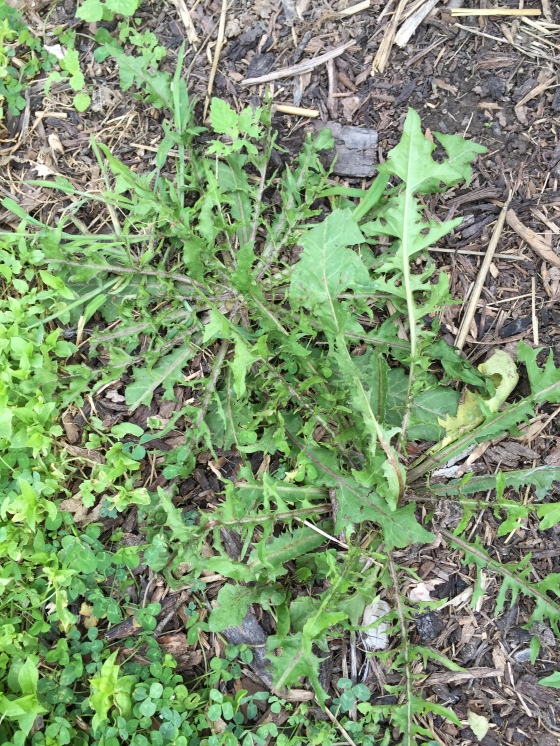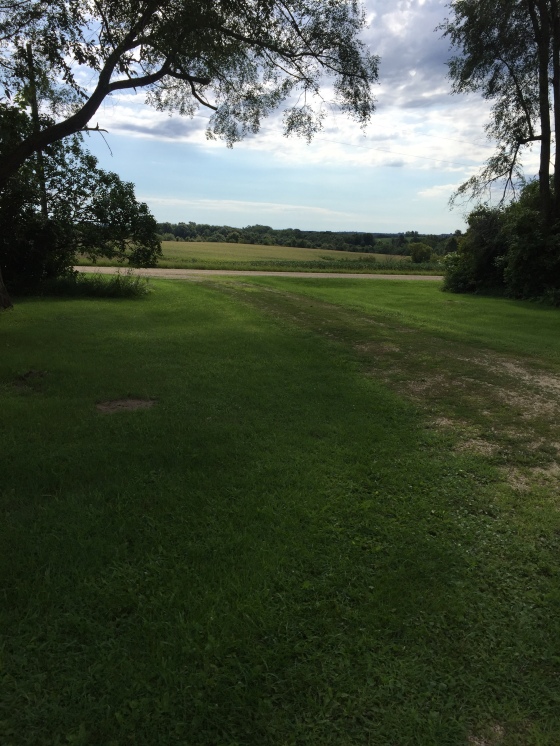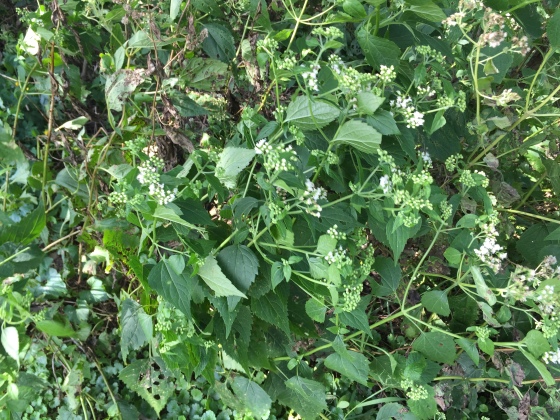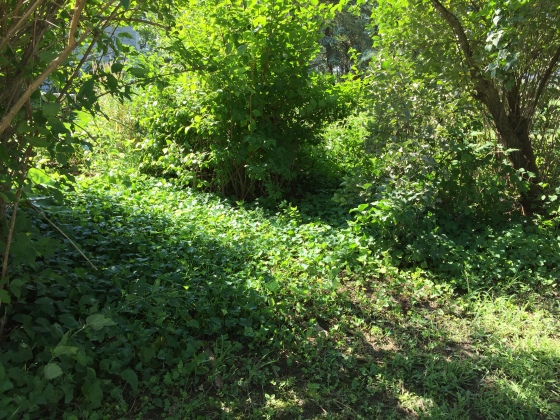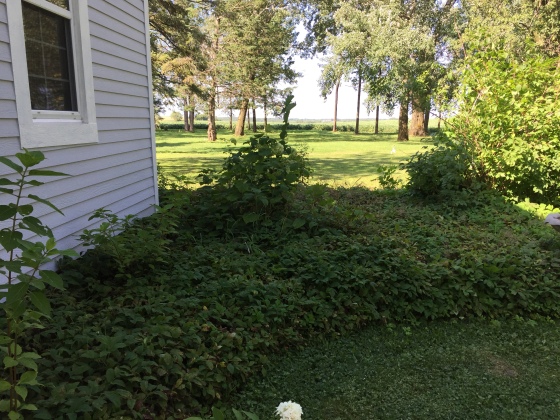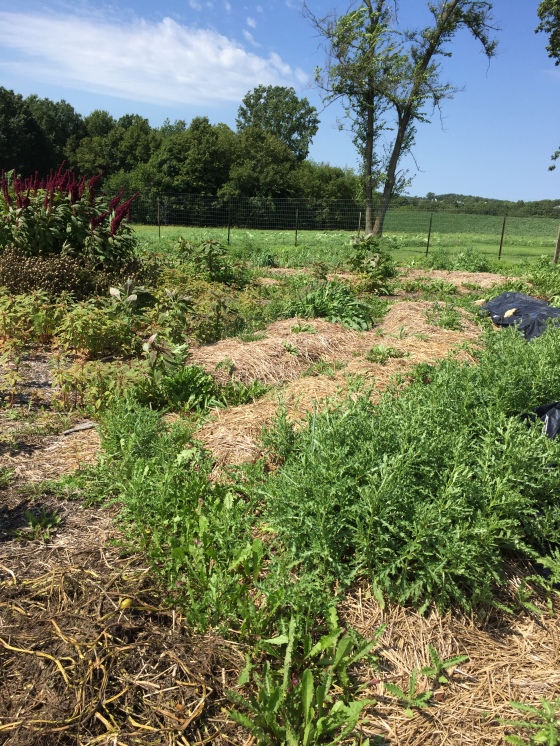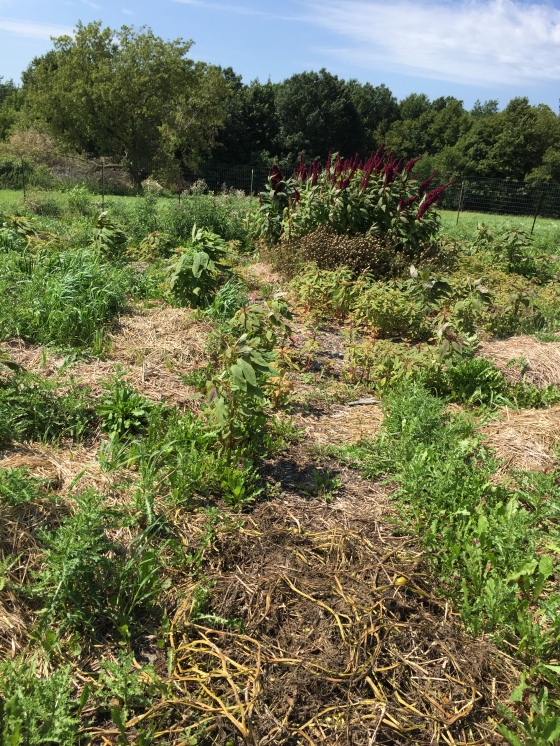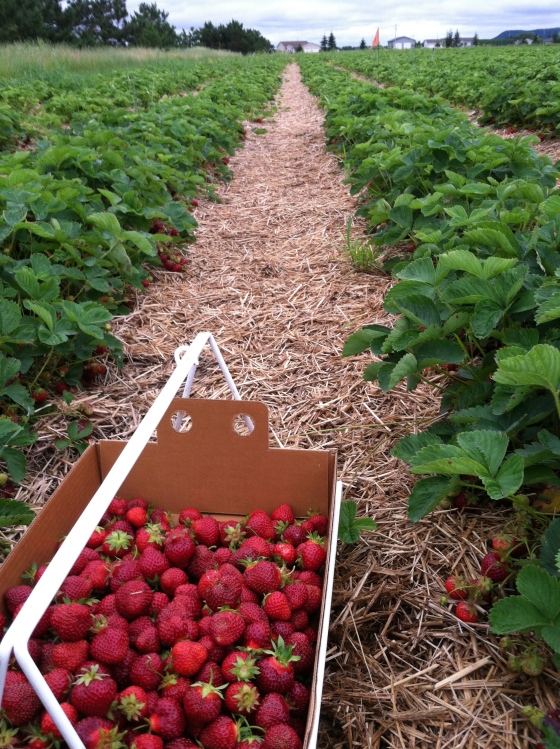
When this farm came on the market, we figured we’d do a drive by, but not likely buy it. For years we had been looking for country properties, but most of them were less than appealing once we got up close and personal. One property with the most amazing farmhouse and view of thousands of DNR wetlands had water in the basement up to the floor joists. It should have been classified as a wetland itself! Another property had a bedroom strewn with hundreds of guns and pond with a pink shell casing beach. Clearly full of shot and clay pigeon remains, we determined that pond to be poisoned. Asking a realtor to show these properties always seemed like a waste of time, so we learned most often to just drive by and check them out first. Occasionally, our interest would be peaked and we would enlist a realtor to show us around, but most often we were on our own.
About five miles out from our Maiden Rock property, the rolling hills and expansive views began to pull at my heart strings, and by the time we were coming down the road in front of the farm, Jeff and I both found ourselves saying, “Oh oh! This could be good!” The site was spectacular and the farmhouse cute as cute could be.
I went immediately to the house to find that the porch door was open. Inside the porch was a locked door to the main house, but an open window that went into the kitchen! I couldn’t resist, so climbed up onto the workbench and into the house. I opened the door for Jeff and within two minutes of walking around, knew we would buy it. Not only was the old farmhouse kitchen huge, but the master bedroom had two walk-in closets and it’s own bathroom! While entirely a mess and in need of some serious TLC, this was not your average farmhouse!
So, we’ve owned the place for nearly three years now, and we just finished the kitchen last week. When we originally designed the space, I thought I wanted a bank of new cabinets and a bank of rebuilt old cabinets. We purchased a shaker design white cabinet from Lowe’s, and in contrast to the chalk-painted old cabinets, the new cabinets seemed a misfit. Immediately, I knew I would have to find old cabinets to replace the new, and it wasn’t until we bought our duplex that I found the perfect cabinets. Although, I think Jeff would disagree – all the rebuilding would cause him to argue that they weren’t quite perfect!
This first picture is what the place looked like when I broke in through the window.

Coming from the city and turn-of-the-century homes where small kitchens were tucked into the back of the house, this layout made my design ideas gush! This kitchen says, “We take food very seriously here!” It is the center of the house with a big heart and spectacular views.

Yep, that’s the window fortuitously open for me to take a stealthy look inside and quickly fall in love!

We removed the sink cabinets, centered the sliding door on that wall and added two large windows to either side of the slider to enhance the view and light.

The above cabinet came out of a house in North Minneapolis that got a kitchen expansion. Yes, it is quarter sawn oak, and yes, I painted it unapologetically. Notice the two flour bins. We use these for garbage and recycling.

The window I broke into was removed to make space for two new windows that would allow even more light to fill the room with southern exposure.

Let the priming and painting begin. Both of the old cabinets were primed and then chalk-painted with a Behr paint called “Pale Lichen.” I made my own chalk paint with flat paint and Plaster of Paris. This color is actually a bit green, but with the dark wax turned brown and with the clear wax looks mostly creamy in color tone. To celebrate the “Farmhouse Coastal” theme, the inside of each cabinet is coated with Behr “Lap Pool Blue.”

The photo below shows the Lowe’s new cabinets and a slide in range we scored from Craigslist. Someday I will have a signature range of some sort, but in the meantime, this Maytag stove was really cheap and nearly brand new. The farmhouse runs on electric with solar in our future plans. You might be surprised that I can cook on electric! This stove made the transition quite easy, actually. And, the solid glass top is so easy to clean up – I love that feature!

The farmhouse kitchen originally had included not only the kitchen, but dining room, bathroom and back entry. So, once we removed the linoleum, we knew much of the floor would need to be removed and new flooring laid to remove the gaps where the walls for these rooms had once been. The picture above shows the dark original floor boards and the new lighter flooring primed and ready to paint.

That brings us to last month. We were finally ready to begin installation of the new old cabinets that Jeff had pulled from the duplex and rebuilt. The white Lowe’s cabinets were removed allowing me to fill in the last of the little holes whose warm puffs of heated air invited mice into the kitchen!

Much of the new old cabinets had to be resized and rebuilt to fit in this location. Jeff cut down one of the door cabinets making each of the doors smaller to fit this space, and had to build new cabinet boxes and a panelled end side. The old parts that remain are the doors, the drawer frame and the drawers.

We celebrate the fact that our farm is above the Great Mississippi Flyway called Lake Pepin. This area lies in the “Driftless” area of Wisconsin forgotten by the glaciers and left with rolling hills and deep ravines. We designed the place to celebrate the water with a “Farmhouse Coastal” theme.

For the last three years what we would do for a counter top was a great unknown. Many years ago, Jeff scored some beautiful marble from a rehab job at an old St. Paul fire station. The marble found a home as the wood stove hearth, counter tops for the old cabinet in the kitchen and a radiator cover in the living room. It was free and a perfect color for the farm. We priced out granite for the kitchen, but when the nearly $4,000 quote came back, I knew we would have to get creative. So, in the meantime, Jeff screwed the old refrigerator side panel to the top of the cabinets as a temporary counter top. It worked great!

The old new cabinets got the same chalk-paint treatment as the other two, but this time I used a white wax making the “Pale Lichen” just a little creamier. We decided on stainless hinges and handles on this side of the kitchen to compliment the appliances and dishwasher.

Now that the new old cabinets are in, I am feeling a bit more irritated with the white stove, but that will have to wait for a later date. I suspect I will search for a similar model, but in stainless. Although, I love the Northstar reproduction range in Robin’s Egg Blue!


We found a counter top! Rummaging around at one of our favorite Building Materials Outlet spots, we found some quartz counters for $300. Since the price would allow for error, Jeff decided to take on the challenge of learning to cut and polish this stuff himself. I am so proud of him! He cut out the sink bowl, buffed the edge to a shine, glued a small piece on the wall end to get the correct length and secured the backsplash. In our other renovations, counter top cutting and installation was a task we would contract out, but not any more! The color exchange between the cabinets and counter is a little more monochromatic than ideal, but for the price, it’s perfect!

Remember the cheese grater light shades! I love the open shelving as well – a place to highlight our color scheme and a few favorite pieces.

We got this old Kitchenaid fridge off Craigslist as well. It came with white bevelled panelling that we replaced with “barnwood” made from cedar fencing and stained with “Sunbleached” gray Varathane. It’s so tempting to go all “farm” theme with lots of weathered barnwood, but I tried to temper these peices to just a few. Our stove hood and fridge are covered with faux barnwood, and we have the old beam between the kitchen and living room. Of course, the signature farmhouse table stands as a stalwart symbol of the weathered barnwood look!

The darker cabinet on the left was original to the house but had hung on the wall near the sink. This was painted with the “Pale Lichen” chalk paint and finished with a dark wax. The cabinet to the right is the old quarter sawn oak cabinet with the same color chalk paint as the smaller cabinet, but finished in clear wax. All hardware is original on both cabinets.

What a view! And, we certainly managed to fill up the space. Someday I will get a real camera so the pictures can be better quality.

Jeff built this table from a hand milled oak tree my parents gave him when they discovered he had a taste for wood-working. I love how he designed the legs to look so chunky. The thing weighs a literal ton!

Remember, this is what the kitchen looked like before we started digging in! Now we have a kitchen that takes its farm lunch very seriously!

